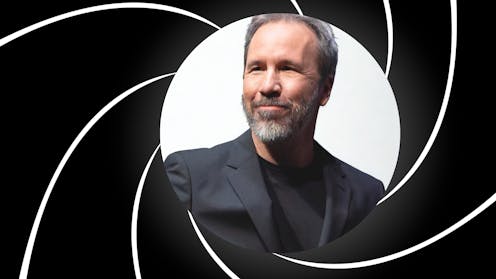Source: The Conversation – France (in French) – By Hugo Vosila, Doctorant en science politique , Sciences Po Bordeaux
À Vannes, le groupe Michelin a mis en place une station d’hydrogène début 2024 pour décarboner le processus industriel de son usine. Mais moins d’un an après le lancement de ce projet, l’industriel a annoncé la fermeture de l’usine. Un exemple des défis que pose la décarbonation dans un contexte encore prégnant de désindustrialisation.
Le 5 novembre 2024, le groupe Michelin annonçait à ses salariés de Cholet et de Vannes l’arrêt de la production des sites à horizon 2026.
« Saignée industrielle » selon la secrétaire générale de la CGT Sophie Binet, la fermeture de l’usine vannetaise du Prat, outre les quelque 299 emplois qu’elle concentrait, met également en péril le devenir de la station d’hydrogène vert HyGO attenante, qui participait à la décarbonation du processus industriel de Michelin pour la fabrication des pneus.
L’annonce de la fermeture de l’industriel – principal consommateur de l’hydrogène (H2) du site – et l’absence d’usages identifiés pour la mobilité interrogent sur le futur de la station, et plus largement sur la pérennité du déploiement des écosystèmes territoriaux basés sur l’hydrogène.
La ruée vers l’hydrogène de la décennie 2010
À l’écart des grands axes de transport nationaux, faiblement industrialisée, la Bretagne n’apparaît pas d’emblée comme la région de prédilection pour le développement d’une filière hydrogène. À la fin de la décennie 2010, elle n’échappe pourtant pas à l’engouement d’acteurs territoriaux publics et privés, qui ambitionnent alors de faire émerger des projets sur les territoires. Sans grand succès toutefois : en Ille-et-Vilaine, rares sont les initiatives qui dépassent le stade des études de faisabilité.
Au niveau étatique, un Plan national de déploiement de l’hydrogène voit le jour en 2018, ciblant la décarbonation de l’industrie, de la mobilité lourde et le soutien à l’innovation.
En parallèle, l’Agence de la Transition écologique (Ademe) lance un premier appel à projet « Écosystèmes mobilité hydrogène » en 2018. L’enjeu est d’assurer des boucles production-distribution-usages, d’essayer de cadrer les velléités locales et de faire le tri parmi les projets.
Du côté de la région, la feuille de route hydrogène renouvelable, publiée en 2020, identifie le maritime et les mobilités comme des axes forts du potentiel breton.
Mais les premières réflexions autour d’un écosystème hydrogène à Vannes remontent au début de cette effervescence, à l’écart des futures orientations régionales. Elles visent à décarboner le process de l’un des seuls sites industriels consommateurs d’hydrogène : l’usine Michelin de Vannes.
Les promesses locales du projet HyGO
Implantée dans l’agglomération depuis 1963, cette dernière utilisait de l’H2 gris fossile, issu du vaporeformage de gaz naturel, pour travailler les membranes métalliques des pneumatiques.
Soucieux de réduire l’empreinte carbone de ses sites, le Bibendum s’engage aux côtés d’acteurs de l’énergie dans une stratégie « tout durable ». Si de premiers appels du pied sont lancés par Engie dès 2015 pour verdir le procédé de l’industriel, il faut attendre 2020 et la création de la société HyGO pour que ces aspirations se concrétisent.
Dans les faits, il s’agit d’un petit électrolyseur sur site, alimenté par de l’électricité renouvelable fournie par Engie, capable de produire 270 kilos quotidiens d’hydrogène vert. Si Michelin est identifié comme le principal consommateur (avec uniquement 40 à 70 kg d’H2/jour cependant), la molécule est également avitaillée au sein d’une station de distribution ouverte pour le rechargement des quelques véhicules qui roulent à l’hydrogène dans l’agglomération – moins d’une dizaine.

Pour suivre au plus près les questions environnementales, retrouvez chaque jeudi notre newsletter thématique « Ici la Terre ».
À l’heure actuelle, le coût de l’hydrogène vert est toujours prohibitif pour des usages diffus (c’est-à-dire, qui émaneraient de particuliers ou de privés qui s’approvisionneraient en H2 de façon non planifiée). En l’absence d’un marché compétitif, la présence d’un industriel historique comme consommateur rassure et garantit un débouché constant. D’autant que le passage de l’H2 gris à l’H2 vert n’a pas modifié le procédé de production de Michelin.
Catalyseur de la station, l’industriel doit donc amortir la faible rentabilité de la distribution, le temps que les usages mobilité se déploient. Après un délai de quelques années, la station HyGO est finalement inaugurée en janvier 2024.
La fermeture de l’usine, coup d’arrêt au projet ?
Moins d’un an plus tard, pourtant, Michelin annonce la fermeture de l’usine. Dans un communiqué de presse, le maire David Robo réagit :
« Ce 5 novembre 2024 […] est une journée noire pour Vannes et un séisme pour le territoire ».
Les raisons invoquées par le PDG Florent Menegaux ? La concurrence chinoise et la hausse de coûts de production du pneumatique en Europe – omettant toutefois de mentionner la rémunération record des actionnaires cette année-là.
Si aucun lien n’est officiellement établi avec le surcoût de l’hydrogène renouvelable consommé depuis peu sur le site, l’annonce est pour le projet HyGO une fâcheuse nouvelle. Les plus optimistes, certes, gagent que la partie mobilité sera amenée à décoller, compensant ainsi la perte commerciale liée à la fermeture de Michelin. Mais à ce stade, les usages mobilité de la station sont extrêmement limités, et ne promettent aucunement un avenir à l’écosystème. Même en couvrant les besoins de l’usine, la consommation d’hydrogène permet au mieux à HyGO d’être sous perfusion, sans rentabiliser les investissements.
Contrairement à Lorient, qui convertit une partie de sa flotte de bus à l’hydrogène renouvelable, l’agglomération de Vannes n’a pas émis le souhait d’utiliser la molécule produite localement pour assurer un débouché stable à la station via ses transports urbains.
Désintérêt de l’État pour la filière ?
Quel avenir pour HyGO ? Certains acteurs souhaiteraient que des aides à la consommation soient promulguées au niveau national pour réduire le prix de l’hydrogène à la pompe.
Mais c’est mal connaître la nouvelle conjoncture étatique de soutien à l’H2. Désormais, finis les appels à projets de l’Ademe qui favorisaient les boucles locales production-usages y compris de mobilité. L’heure est aux économies : la Stratégie nationale hydrogène, actualisée en avril 2025 – ainsi que les futurs appels à projets de l’Ademe – sont moins généreux dans leurs aides aux écosystèmes territoriaux, en particulier les plus petits.
Dans un contexte budgétaire limité, l’accompagnement étatique se resserre sur les usages considérés comme indispensables de l’hydrogène renouvelable, c’est-à-dire la décarbonation de l’industrie, au détriment des usages au lien avec la mobilité, à l’exception de ceux liés à la production de e-carburant pour l’aérien. C’est ironique pour HyGO Vannes, qui perd son atout industriel au moment même où ce dernier est consacré par les pouvoirs publics.
Cette restriction du soutien national à l’hydrogène est concomitante avec un recul critique plus diffus sur les vertus révolutionnaires de cette technologie, symptomatique des trajectoires des processus d’innovation.
Promesses techno-scientifiques et désillusions
Pour l’économiste Pierre Benoît Joly, une des caractéristiques pathologiques de ce qu’il nomme « régime d’économies des promesses techno-scientifiques » serait l’inévitable cycle hype (effet de mode)/hope (espoir)/disappointment (déception), auquel le déploiement de l’hydrogène renouvelable ne semble pas échapper. À l’excitation initiale véhiculée par l’apparition d’une nouvelle technologie succéderait un « creux de désillusion » (où les attentes exagérées se heurtent à la réalité), suivi d’une reprise plus mesurée et restreinte de son développement.
Un membre de l’Ademe Bretagne, avec qui j’ai eu un entretien dans le cadre de mon travail de thèse, a indiqué :
« À dire tout et n’importe quoi sur l’hydrogène, au bout d’un moment, les gens ont perdu espoir. Ils se sont dit non, mais l’hydrogène, c’est nul en fait. Il y a eu ce retour de bâton. Mais l’industrie, ça sera effectivement quelque chose de plus solide, à mon avis, quand ça va partir ».
Mais comment s’en assurer ? À Vannes, c’est précisément l’industriel qui a fait défaut. Projet lancé trop tôt ou surestimation de l’ancrage territorial de Michelin ? Les accompagnateurs de la station côté société d’économie mixte expriment le sentiment d’avoir « essuyé les plâtres » (selon les mots d’un membre de la société d’économie mixte (SEM) Énergies 56) en prenant le risque de se lancer les premiers.
La faute à pas de chance ? Prise isolément, la fermeture de Michelin à Vannes peut paraître anecdotique dans l’économie nationale de l’hydrogène. On l’a vu, l’industriel consommait moins de 70kg/jour d’hydrogène vert. La filière pneumatique battait déjà de l’aile, et la Bretagne, après tout, n’est pas une terre d’industrie.
La pertinence de l’hydrogène pour la décarbonation de l’industrie en France serait davantage à aller chercher du côté de la sidérurgie, de la chimie, ou du raffinage, dans le Nord-Pas-de-Calais, ou en Auvergne-Rhône-Alpes.
Des industries qui ne jouent pas le jeu ?
À s’y pencher de plus près, pourtant, ces filières n’échappent pas non plus aux menaces de fermeture.
Pour la sidérurgie, le géant ArcelorMittal, avec Genvia, investit certes dans un électrolyseur pour utiliser de l’hydrogène bas-carbone à la place du charbon et décarboner sa production d’acier. Mais il ferme en parallèle ses sites de Denain et de Reims, quelques semaines seulement après l’annonce de Michelin, laissant craindre un prochain plan social à Dunkerque.
Pour la chimie et la production d’engrais, la multinationale Yara s’est associée avec Lhyfe en Normandie pour utiliser de l’hydrogène vert dans sa production d’ammoniac. Mais elle ferme son site de Montoir-de-Bretagne en Loire-Atlantique, déficitaire et non conforme aux normes environnementales.
Citons également le groupe LAT Nitrogen, fournisseur européen d’engrais qui, après avoir bénéficié de 4 milliards d’euros de subventions pour réduire les émissions de ses sites via le développement d’électrolyseurs et la production-consommation d’hydrogène vert, cesse sa production à Grandpuits, bien qu’engagé auprès de l’État à décarboner le site via un contrat de transition écologique.
Dans la vallée de la chimie, en Isère, Vencorex et par effet domino Arkema, deux firmes consommatrices d’hydrogène dans leurs procédés, sont en voie de liquidation.
Les efforts de l’État en matière de réindustrialisation verte se multiplient pourtant : Loi industrie verte en octobre 2023, France Nation Verte en 2022… Mais quelles contraintes pour les entreprises ? À quoi bon décarboner des industries qui ferment ?
« Grand État vert » régulateur et planificateur ?
Inséré dans des marchés internationaux, le groupe Michelin peut se permettre de produire moins cher ailleurs, en Asie en l’occurrence. Est-ce la conséquence d’une décennie de politique de l’offre ? Les règles de la concurrence et du marché semblent peu adaptées aux enjeux de souveraineté industrielle et énergétique.
Dans un contexte de renouveau protectionniste exacerbé outre-Atlantique, la problématique des rapports entre stratégies multinationales et ambitions climatiques nationales mérite une actualisation. Planification, nationalisation… expropriation ?
Ce que l’économiste britannique Daniela Gabor nomme le Wall Street Climate Consensus, modèle d’une transition douce par les marchés, qui confie aux fonds d’investissement et aux entreprises privées le soin de s’écologiser, paraît avoir atteint ses limites : délocalisations à bas coût quand la conjoncture économique se dégrade, persistance d’actifs fossiles et d’activités extractives…
À l’opposé, le modèle du « Grand État vert », régulateur et planificateur, pourrait avoir certaines vertus. Sans nécessairement prôner le « léninisme écologique » d’un Andreas Malm, des formes plus poussées d’interventionnisme public, voire de coercition auprès de firmes, pourraient assurer une pérennité à certaines filières émergentes comme l’hydrogène vert.
![]()
Hugo Vosila a reçu des financements de l’Agence Nationale de la Recherche (ANR) pour son travail de thèse.
– ref. Faut-il décarboner des usines qui ferment ? En Bretagne, les mésaventures de Michelin et l’hydrogène vert – https://theconversation.com/faut-il-decarboner-des-usines-qui-ferment-en-bretagne-les-mesaventures-de-michelin-et-lhydrogene-vert-257033






